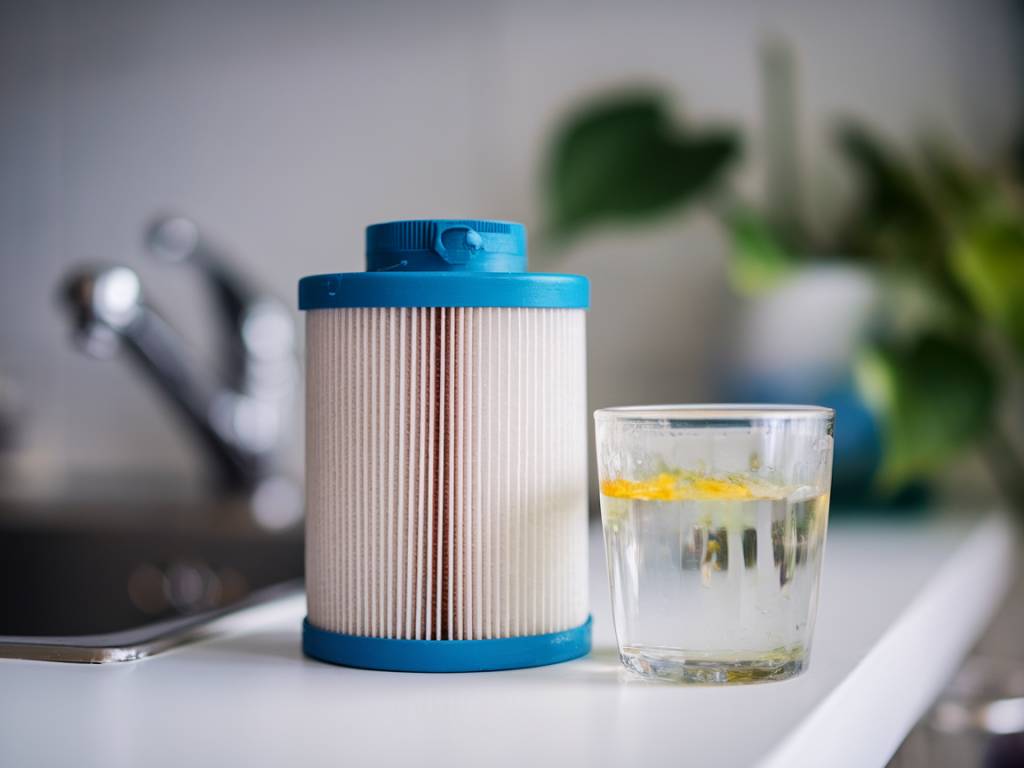Understanding PFAS: What Are They and Why Are They a Concern?
PFAS (Per- and Polyfluoroalkyl Substances) are synthetic chemicals widely used in industries and consumer products since the 1940s. Found in items like non-stick cookware, water-resistant clothing, and even some food packaging, PFAS are notorious for their persistence in the environment and the human body—earning them the nickname « forever chemicals. »
The concern? These chemicals have been linked to serious health issues, including cancer, immune system dysfunction, and liver damage. Worse, they often seep into groundwater supplies, making their way into our tap water.
If you’re wondering how to protect yourself and your family from PFAS-contaminated water, you’ve come to the right place. Let’s explore the most effective filtration methods.
Do Regular Water Filters Remove PFAS?
Unfortunately, your basic pitcher filter won’t cut it. Most conventional filters, like those using simple carbon-based filtration, are not designed to remove PFAS effectively. That means even if your water looks and tastes fine, it could still be harboring these harmful chemicals.
Effective Filtration Solutions for PFAS
Now that we know conventional filters aren’t enough, let’s dive into the most effective filtration solutions that can help remove PFAS from your drinking water.
Activated Carbon Filters (Granular or Block)
Activated carbon filtration is one of the most effective ways to remove PFAS, but not all carbon filters are created equal. It depends on the type of carbon used and the contact time with water.
The best options include:
- Granular Activated Carbon (GAC): These filters use loose carbon granules that can trap PFAS molecules. However, effectiveness depends on factors like water flow rate and contaminant concentration.
- Carbon Block Filters: A more densely packed version of carbon filters, these offer longer contact time with the water, improving PFAS removal efficiency. When choosing a carbon block filter, look for models specifically tested and certified for PFAS removal.
Reverse Osmosis (RO) Systems
Reverse osmosis is one of the most efficient filtration systems when it comes to PFAS removal. RO systems force water through a semipermeable membrane, effectively filtering out not just PFAS, but also heavy metals, bacteria, and other contaminants.
Why is it so effective?
- RO systems remove particles as small as 0.0001 microns, which includes PFAS molecules.
- They often incorporate additional stages like activated carbon, providing extra layers of purification.
- These systems work well for both municipal and well water supplies.
The main drawback? Reverse osmosis systems tend to produce wastewater, and they may require professional installation. However, for those serious about clean water, it’s a worthwhile investment.
Ion Exchange Resins
Ion exchange filters use resin beads to attract and bind PFAS molecules, replacing them with harmless ions. These systems are particularly useful in removing long-chain PFAS compounds.
Pros include:
- High removal efficiency for certain PFAS types.
- Suitable for large-scale filtration, including municipal water treatments.
However, ion exchange filters need regular maintenance and replacement of resin beads to remain effective.
Does Boiling Water Help?
No. Unlike bacteria or some other contaminants, PFAS do not break down easily at boiling temperatures. In fact, boiling water may concentrate PFAS levels instead of reducing them, since water evaporates but PFAS remains.
How to Choose the Right PFAS Water Filter
With multiple options available, selecting the right PFAS filtration system depends on your specific needs. Consider these factors:
- Certification: Look for filters certified by organizations like NSF International or the EPA that confirm PFAS removal capabilities.
- Water Source: Well water versus municipal water may require different types of filtration.
- Budget: Reverse osmosis systems tend to be pricier, while carbon filtration provides a more budget-friendly alternative.
- Maintenance: Some filters require frequent replacements to maintain effectiveness.
Additional Tips to Reduce PFAS Exposure
Filtration is just one piece of the puzzle. Here are additional steps to minimize exposure:
- Avoid non-stick cookware made with PTFE or Teflon-based coatings.
- Check product labels for water-resistant coatings, as many contain PFAS.
- Drink filtered water instead of bottled water, which may also contain PFAS.
- Stay informed about local water testing and contamination reports.
PFAS exposure is a growing concern, but with the right filtration system and proactive steps, you can significantly reduce your risks and ensure cleaner, safer drinking water for your household.
